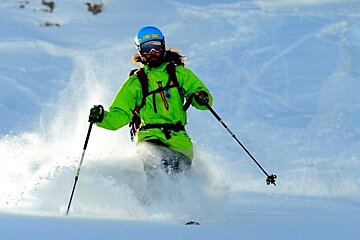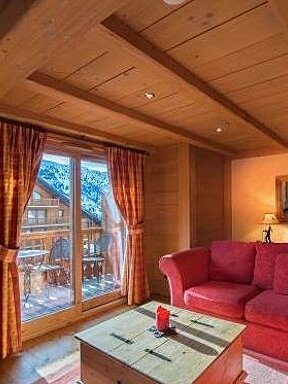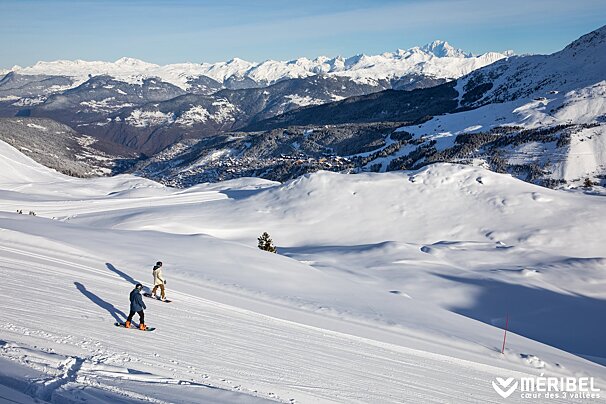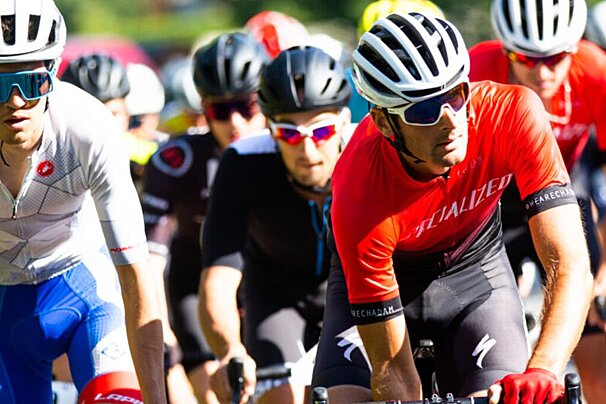
© Andy Lloyd - www.alpictures.eu
Basic skiing techniques
Standing tall, staying strong on your skis
Listening to some parents teaching their children to ski the other day, one phrase that kept being repeated was “bend your knees!” It is a stereotypical phrase and assumed that all ski instructors use as a stock comment. However the reality is very different. I find that I spend much of my time asking skiers to stand taller.
For the children being taught by their parents, bending their knees more resulted in two effects at ski level, firstly their weight dropping back onto their heels and secondly the knees dropping together and the skis going onto their edges. Both these effects resulted in the child starting to fight their skis.
If the opposite advice had been given and they were asked to stand taller the results would have been very different. They would have become more naturally balanced over the balls of their feet (or at least closer to being naturally balanced over the balls of their feet), and the skis would have rested flatter on the snow making them much easier to control and direct. The end result would have been a more natural stance and a stronger ‘connection’ with the skis and the snow.
Try this little task. Stand up naturally and balance through the balls of your feet, now let your legs flex lightly, let your knees move forwards a couple of inches (4–5cm). Feel for how strong you are and how effortless it is to hold this position.
Now “bend your knees” and let your legs flex more so your thighs move more towards the horizontal. Compare your feelings. How strong is this position compared to the first? How much effort does it take to hold this position compared to the first? Now relate this to your skiing. How much effort do you waste holding a lower, more ‘flexed’ stance because someone has told you to “bend your knees”. All this extra effort for no direct benefit.
Let us use this taller, more natural stance to give us:
- better balance and therefore a greater connection with our skis
- more efficient skiing, use your skeletal structure and musculature more efficiently
- more power, use your skeletal structure and musculature more effectively and powerfully
So try this for your level of skiing:
Introductory level skiers
Level: nursery areas and green pistes. Become connected to your skis:
- find a section of slope that you are confident to slide on
- stand tall and stand through / balance through the balls of your feet
- stay in a tall ‘natural’ position as you link some gentle curves together
With this taller stance you will be able to work with your skis rather than feeling that you are fighting them.
Developing level skiers
Level: blues and easy reds. Let's develop a more accurate balance:
- find a section of the slope you are confident to let your skis slide on
- use a positive but smooth stretch as you move from one curve to the next, as you move from one turning ski to the other
- a positive stretch to stand tall will help you establish a better balance on the new turning foot and therefore the new turning ski
- stay tall as you steer around the curve and allow your leg to ‘relax’ a little as your skis move through the end of the curve and start travelling more across the slope
- only use a natural range of movement to ‘settle’ onto the skis and remain balanced
This taller stance will enable you to become better balanced over the new turning ski at the start of the curve, whilst the softening at the end of the curve allows you to remain balanced through this phase.
Performing skiers
Level: reds and blacks. Let's go fast and develop more power out of the skis:
- find a section of the slope you're confident to let yourself go fast on and make sure it's safe
- stretch and stay tall as you become supported by the new turning ski, progressively tilt the skis to generate the curve
- hold your leg ‘long and strong’ to brace against the ski, loading it with more power
- let the ski flatten, allowing the forces of the curve to pull your centre of mass (hips/tummy button) out of that curve and fluidly into the new curve
Remember - long is strong!
The two lessons to be learned for all levels of skier are:
- stand taller
- always go to professionals for your lessons
Article courtesy of James (Jaz) Lamb, Director, British Alpine Ski & Snowboard School Morzine.




























